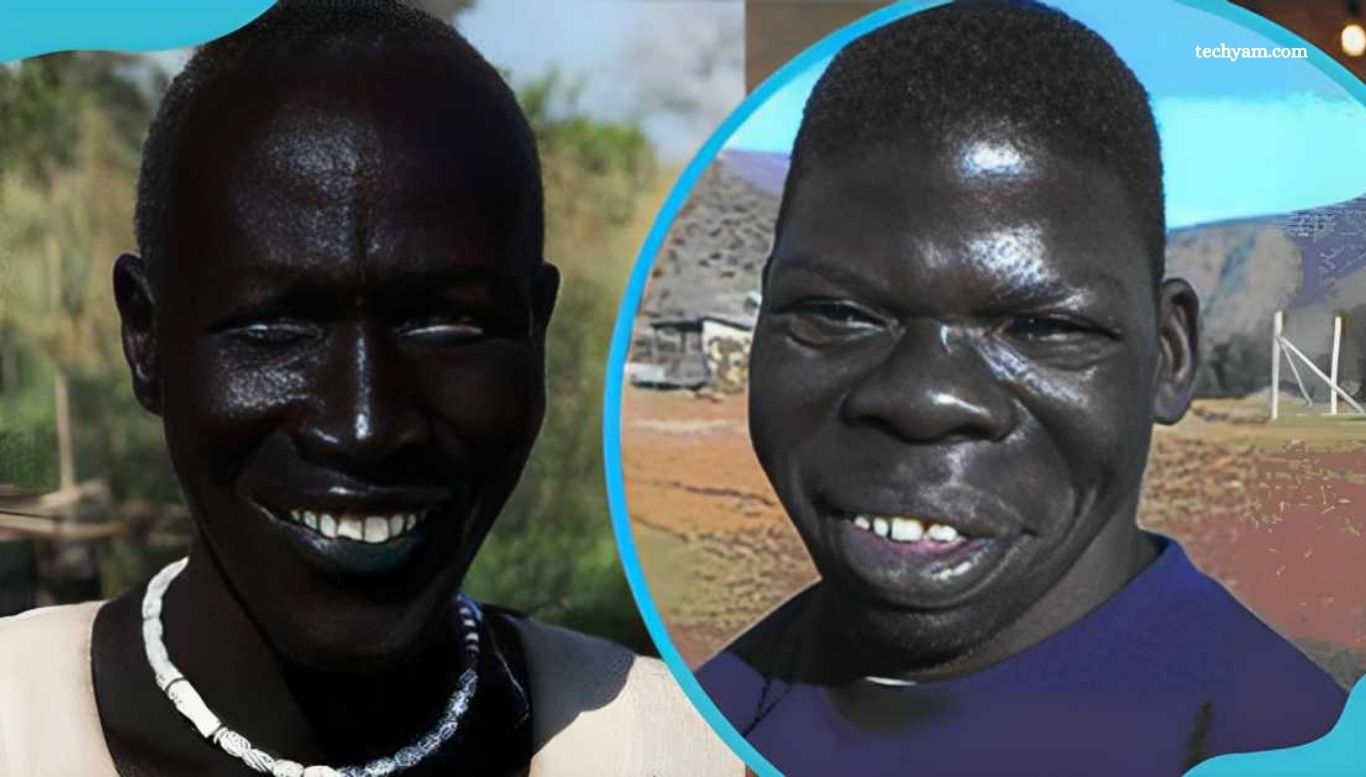A Comprehensive Study on the World’s Darkest Person delves into the fascinating topic of human skin pigmentation, exploring the scientific, cultural, and historical aspects behind it. This study focuses on individuals with the darkest natural skin tones, examining factors such as genetics, environmental influences, and the evolution of melanin production. Through in-depth research, it sheds light on how skin color has influenced identity, social dynamics, and perceptions across different societies. The study also highlights the role of melanin in protecting the skin from ultraviolet radiation and its broader implications for human biology and adaptation.
Find Out the Blackest Person in The World: A Detailed Search
It may seem like an odd question to ask, but have you ever wondered who the “blackest” person in the world is? Is it even possible to find such an individual? After all, there’s no universal scale or registry to measure skin pigmentation. So, how does one approach this seemingly impossible query? The truth is, there isn’t a definitive answer to this question. However, while we may not be able to pinpoint one person, we can explore some of the darkest-skinned groups and individuals who are often recognized for their deep, rich complexion.
Read More: Coyyn.com Economy: Everything You Should Know
Ethnic Groups in Africa with the Darkest Skin Tones
Africa is home to several ethnic groups with rich, dark skin tones, particularly in regions where sunlight is abundant. These groups, with their unique physical traits, are often seen as contenders for the title of the “blackest” person in the world.
Dinka and Nuer (South Sudan)
The Dinka and Nuer people of South Sudan are among the darkest-skinned individuals globally, living in one of the sunniest regions near the equator. Their tall stature and distinct physical features contribute to their striking appearance.
Maasai (Kenya and Tanzania)
Known for their semi-nomadic lifestyle, the Maasai people’s exposure to intense sunlight and rugged terrain results in their deep skin tones, which have become vital for their survival.
Himba (Namibia)
The Himba people are famous for their skincare rituals, using a mixture of butterfat and ochre to protect their skin from the harsh desert sun. Their reddish tint and minimal clothing make them fascinating to outsiders, adding to their distinct appearance.
Shilluk (South Sudan)
Neighbors to the Dinka and Nuer, the Shilluk people also exhibit dark skin, an adaptation to the strong sunlight in their Nile River environment. Their skin tones and physical traits play a significant role in their cultural practices.
Dark-Skinned Models Redefining Global Beauty
For years, the fashion and beauty industries emphasized Eurocentric ideals, often favoring light-skinned models with specific features. However, this has started to change, with dark-skinned models gaining recognition and challenging traditional beauty standards. Here are a few who stand out:
Nyakim Gatwech (South Sudan)
Known as the “Queen of Dark,” Nyakim Gatwech is a South Sudanese model whose radiant dark skin has made her a prominent figure in fashion. She uses her platform to promote body positivity and self-acceptance, especially for dark-skinned women.
Khoudia Diop (Senegal)
Khoudia Diop, dubbed the “Melanin Goddess,” celebrates her deep skin tone and has become a symbol of empowerment, using her complexion to challenge beauty norms and spread positivity.
Alek Wek (South Sudan)
Alek Wek broke barriers in the 1990s as one of the first dark-skinned models to gain international fame. Her success helped pave the way for greater diversity in the fashion world, even earning her roles in Hollywood.
Anok Yai (Egyptian-Sudanese)
Anok Yai became a fashion sensation after a viral photo from a college event. Her flawless dark skin and elegant features have made her a rising star in high fashion, representing major brands worldwide.
Duckie Thot (South Sudanese-Australian)
Duckie Thot, of South Sudanese descent, gained fame for her striking dark skin and doll-like features. Her appearance on Australia’s Next Top Model propelled her career, making her a well-known face in the fashion industry.
Adut Akech (South Sudan)
Adut Akech, another South Sudanese-Australian model, has quickly risen to fame. Known for her dark skin and distinctive beauty, she has graced the covers of major magazines and walked the runways for top designers.
Flaviana Matata (Tanzania)
Flaviana Matata, a Tanzanian model and beauty queen, rose to prominence after winning Miss Universe Tanzania. Known for her short hair and dark skin, she has worked with top designers and is passionate about philanthropy, particularly in supporting education for young girls in Tanzania.
Frequently Asked Questions
What does “the blackest person in the world” mean?
The phrase “the blackest person in the world” refers to individuals with the darkest natural skin tones, which are the result of high levels of melanin. It’s often used informally, though it is important to note that skin color is highly variable and should be approached with respect and sensitivity.
How do you measure skin tone to determine the “blackest” person?
There isn’t an official scale or measurement system to determine the “blackest” person. Skin tone can be influenced by factors like genetics, geography, and sun exposure. In studies, skin tones are often classified using shades on a spectrum, but it’s not an exact science to identify one individual as the “blackest.”
Are there any specific ethnic groups known for having the darkest skin tones?
Yes, certain ethnic groups in regions close to the equator, such as the Dinka, Nuer, and Shilluk of South Sudan, or the Maasai of Kenya and Tanzania, are known for their deep skin tones. These populations have adapted over thousands of years to intense sunlight, which results in darker skin tones.
Are there any well-known individuals considered as the “blackest” person in the world?
While there isn’t an official title, individuals like Nyakim Gatwech, Khoudia Diop, Alek Wek, and Anok Yai are often highlighted for their deep skin tones and their influence in fashion and beauty. These individuals are celebrated for their unique and powerful representation of dark skin.
Why is melanin important in determining skin tone?
Melanin is the pigment that gives skin, eyes, and hair their color. Higher melanin levels result in darker skin tones and offer protection against the harmful effects of ultraviolet (UV) radiation from the sun. This adaptation has evolved in people from regions with intense sunlight.
How does the media represent people with dark skin tones?
Historically, the media has often favored lighter skin tones, especially in the fashion and beauty industries. However, in recent years, there has been a growing trend toward more diverse representation, with models like Nyakim Gatwech and Khoudia Diop redefining beauty standards by embracing deep skin tones.
Why is it important to celebrate dark skin tones?
Celebrating dark skin tones helps combat historical discrimination and promotes self-love and empowerment. Embracing diversity in skin color fosters inclusivity and encourages people to feel proud of their natural beauty, regardless of societal beauty standards.
Can people of all skin tones be considered beautiful?
Absolutely. Beauty is subjective and transcends skin color. People of all skin tones, including those with the darkest complexions, possess unique beauty. Embracing diversity allows for a more inclusive definition of beauty, celebrating different looks and cultural backgrounds.
What role does culture play in defining skin tone and beauty?
Culture plays a significant role in shaping beauty standards, and different cultures have different perceptions of skin tone. In many African cultures, deep skin tones are seen as a source of pride and strength. The increasing global conversation about beauty diversity is slowly reshaping how skin tones are viewed across the world.
Why is research on skin tone and melanin significant?
Research on skin tone and melanin helps us understand human evolution, adaptation to environmental factors like sunlight, and the health benefits of melanin, such as protection from UV radiation. It also contributes to ongoing conversations about race, beauty, and representation in society.
Conclusion
while the concept of identifying the “blackest” person in the world may seem intriguing, it is important to approach the topic with respect and understanding. Skin tone is influenced by various factors, including genetics and environment, and is not easily defined or measured.
Ethnic groups in regions with intense sunlight, such as the Dinka, Nuer, and Maasai, often have darker skin tones due to natural adaptations. Additionally, the rise of dark-skinned models in the fashion industry has helped challenge traditional beauty standards, promoting inclusivity and celebrating diverse skin tones. Ultimately, beauty is subjective, and every skin tone, regardless of its depth, deserves recognition and appreciation.







